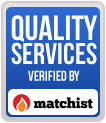So, after you let that sink in a bit, let’s talk. How many clicks is your website getting? Where does your business rank in search results? Given the data, there is a large incentive for businesses to optimize their page in order to boost search rankings. SEO, or search engine optimization, is a tool for increasing your online audience by embedding key words in the text of your page.
Consider these numbers:
15.5 billion: the estimated number of searches Americans performed in 2010 via Google, Bing, and Yahoo!
80: the percentage of US customers who research a product or service online before making a purchase offline
74-84: the range in percentage of all traffic to websites delivered via search engines
50: the percentage of clicks earned by the first and second place links on a Google search result
6: the percentage of clicks earned by the ninth and tenth place on a Google search result
What was that? You say an online presence is enough for your business to find customers? Sure, an online presence is essential, but can potential clients find you? Oh. You have fliers and business cards. What a wonderfully small audience you’re getting! You could have so much more. Let’s discuss some reasons behind the SEO marketing strategy and initial steps you can take once you’re convinced.
1) Outreach and opinions. Fliers and business cards depend on many extraneous factors, e.g. readership, popularity, business markets. It is also an additional fee for your business to consider; how much is it costing you to change the size of text or insert pictures in that ad? Is this marketing approach limiting your business’ full potential? It’s likely. SEO, on the other hand, is not an additional cost, especially if you’re already paying for the site. Having your website in the top 5 of your clients’ results list not only increases your credibility (a sneaky psychological tactic), but it will provide a wider audience for your product or service.
2) Analysis and Advancement. Google Analytics is a tool at your disposal to set and achieve goals and where success rates can be measured. With SEO, your website can reach the top of the pile and be automatically discovered by potential customers on multiple search engines.
3) Code and Content. So, this is a good thing? Yes. But, how much work is it to attain a high SEO? Aww, not much. It’s really quite simple. You only need to add some code and content to your site to make it more appealing to search engines. Adding “META” tags into your HTML is not used by all search engines, but some do. Adding these tags can benefit your site’s popularity. An even easier (depending on your skill level), and quicker task is to utilize strong keywords in the content of your site. These keywords can be found via web developers, SEO sites, and other tools. Also, consider placing links on other pages that point to your site. When you have strong content combined with multiple links, you’ll quickly see why SEO matters.




